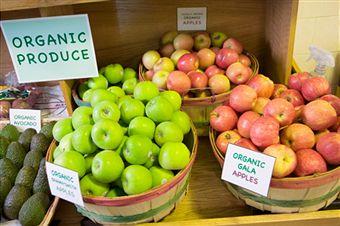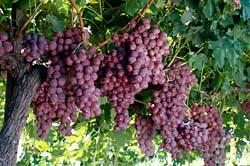Science with a good number of research studies has now shown that there are many natural bioactive compounds that can act as aromatase inhibitors in both women and men via control of beta cell expression thus reducing the development of breast cancer, ovarian cancer and prostate cancer.
Aromatase inhibitors and hyper-aromatisation
The use of Aromatase Inhibitors (AIs) is now common practice with post-menopausal breast cancer patients who are estrogen positive (ER+ve). Drugs such as Letrozole, Anastrozole and Exemestane are routinely used by oncologists to inhibit the production of oestrogen, by aromatase enzymes in the ovaries, liver and fat stores.
ER+ve cancers of the breast and ovaries, along with endometriosis, ovarian and fibroid cysts can be the result of Hyper-aromatisation, where excessive aromatase enzymes turn androgens - for example, testosterone or DHEA - into oestrogens, both oestrone and oestradiol. This does not just happen in women but in men too, where hyper-aromatisation is linked to poor insulin control, diabetes, obesity, and enlarged prostate glands and prostate cancer. It can be called Aromatase Excess Syndome or AES, or AEXS.
According to a 2014 study(1) in women, hyper-aromatisation increases oestrone in 97% of cases, oestradiol in 48% of cases and circulating testosterone and androsteindione levels are low to sub-normal.
Oestrogen is actually a family of chemicals divided into 3 sub-groups.
* Human Oestrogen - principally oestrone (estrone, E1), the female 'sex hormone' produced in the ovaries; oestradiol (estradiol, E2) produced principally in the fat stores; and estriol (E3) which has a balancing and regulatory effect on E1 and E2.
* Chemical oestrogen (xenoestrogen) found in many herbicides, pesticides and even tolietry and personal care products such as some nail polishes, perfumes and sun creams; and -
* Phytoestrogens, or plant estrogens, typically found in greens and beans. Dubbed by Professor Trevor Powles of the Royal Marsden as 'anti-oestrogens', these serve to sit on the very receptor sites oestradiol or xenoestrogens aim to attack, blocking the attack.
Oestradiol is considerably more dangerous than oestrone - it blocks the cellular magnesium pump that pushes potassium into cells and kicks sodium out. As a result the cell 'powers down', and oxygen levels reduce. Phytoestrogens are yet again many times weaker than oestrone. Thus it is true to say these plants contain oestrogen, but totally unscientific to imply that they add to the body's oestrogen load. They block the harm that oestradiol and xenoestrogens could cause by blocking receptor sites from attack..
AI drugs work by inhibiting enzymes in the body that are needed for the production of oestradiol. While oestrone from the ovaries declines after menopause, what few women realise is that there are several other sources for oestrogen production which then increase – for example the liver, and fatty tissue under the skin. These can produce oestradiol. AI’s block them all.
So what did women do to reverse the scourge of high estrogen before AI drugs like Arimidex, Exemestane, and Letrozole (Femara) came along?
For thousands of years, nature provided the answer.
German Scientists show benefits of natural estrogens
 If diets high in natural foods that inhibit the aromatase enzyme are employed, breast cancers in postmenopausal women simply don’t get a chance to start, according to research from the University of Munster, in Germany. Scientists there have found that natural aromatase inhibitors are what keep normal cells from developing to the point where they can be classified as Grade 1 cancer.
If diets high in natural foods that inhibit the aromatase enzyme are employed, breast cancers in postmenopausal women simply don’t get a chance to start, according to research from the University of Munster, in Germany. Scientists there have found that natural aromatase inhibitors are what keep normal cells from developing to the point where they can be classified as Grade 1 cancer.
All women have oestrogen receptor sites on the surfaces of their cells and particularly breast cells – alpha and beta sites. After puberty, these sites receive the oestrone hormone and, as a result, the cells grow and the breast develops. It is only much later in life that an excess of oestrogen and especially oestradiol, can continue to stimulate the rapid division of breast cells and create the problem that occurs in the majority of breast cancers.
In a study designed to determine the effectiveness of natural AI’s compared with common anti-oestrogen drugs, German scientists analysed 21 human breast cancer tissue samples and concluded that the transition from normal breast cells to grade 1 tumours was characterised by the down-regulation of the beta sites, while the transition from grade 1 to grade 3 tumours involved a decrease in alpha expression.
Their research then tested the breast cancer drug Tamoxifen which saw an increase in alpha expression and left ER beta unchanged. Next, they tested AI drugs and found that beta expression was increased and thus the initiation of cancer was blocked. (Anticancer Research, June 2009)
Natural Alternatives can alter alpha and beta breast cell expression.
Unsurprisingly for those of us who have studied natural compounds in foods, nature equipped women to fight breast cancer all along. Importantly, our scientific knowledge is improving all the time. Perhaps one of the best reviews was produced in 2008, although you may well need a biological science degree to understand it (2).
Phytoestrogens from all manner of plants can increase alpha and beta expression and effectively block the disruptive effects of the aggressive human hormone estradiol. They are abundant in green vegetables, fruits and particularly legumes - pulses like lentils, chick peas and beans.
Genestein - You can find a particularly potent alpha and beta site balancer in Red Clover – the herb of Hippocrates – the active ingredient is genistein. Not only researched by Professor Trevor Powles at the Royal Marsden, it was named as one of the top 10 bioactive compounds that could help prevent cancer recurrence when a patient was in remission by Dr. Young S. Kim the head of Nutrition and Cancer at the National Cancer institute.
Flavonoids are also abundant natural sources of alpha and beta site regulation: There are several subtypes of flavonoids. A meta-analysis (3), showed that women with high consumption of flavonols and flavones had considerably less risk of breast cancer, overall. This reduce risk was particularly significant in post-menopausal women. Major flavonols included quercitin, myricetin and kaempferol - in onions, broccoli, tea, and various common fruits; Flavones included apigenin and luteolin, and foods such as aromatic herbs, celery and chamomile tea.
Indole 3 carbinol (I3C) - Possibly the most potent natural compound is Indole 3 Carbinol, found in broccoli and kale, which acts in a number of ways, from denaturing aggressive oestradiol and its by products to rebalancing oestrogen receptor sites. I3C is almost ‘the wonder compound’ it has so many beneficial effects – from being once dubbed 'the natural Tamoxifen', without the side effects to an inhibitor of dangerous dioxins in the body. Natural supplements are available; it was even prescribed by the Mayo Clinic to one of Chris' Personal Prescription patients a few years ago!
Quercitin is a main ingredient of the Plaskett therapy (Professor Plaskett ‘polished’ the Gerson Therapy in the mid 1990’s using the latest scientific research). It is widely available in onions and apples, however it denatures rapidly in the body and so it seems that the potency comes not so much from the quercetin itself but from its breakdown by-products. Science is playing catch-up tracking their effects, but apart from the usual antioxidant and anti-inflammatory benefits, and anti-bacterial/anti-viral factors, there is research indicating that they have AI benefits in breast cancer cells. Other sources include garlic, kale, Brussels sprouts and cabbage. You can supplement.
 Resveratrol is another flavenoid covered on our Website with numerous research studies. Resveratrol is the natural protective agent in the skins of red grapes and black and red berries. Amongst its many benefits, there is specific research on its breast cancer control via oestrogen receptors. But as we have told you before, please don’t think drinking a glass or two of red wine will have any effect, the doses would be way too low. Natural supplements are available – and drugs are on their way.
Resveratrol is another flavenoid covered on our Website with numerous research studies. Resveratrol is the natural protective agent in the skins of red grapes and black and red berries. Amongst its many benefits, there is specific research on its breast cancer control via oestrogen receptors. But as we have told you before, please don’t think drinking a glass or two of red wine will have any effect, the doses would be way too low. Natural supplements are available – and drugs are on their way.
Chrysin is a naturally occurring flavonoid from the passion flower plant and a strong natural AI with in vitro research supporting its effects. Drugs have been prepared from this plant, but the natural compound also exists as a supplement Another natural compound, piperine, in black pepper seems to enhance its action. But, there are no in vivo studies, I could find.
Myomin is touted as a Traditional Chinese herbal complex that does have in vivo studies showing it reduces aromatase enzyme levels in the liver and in the ovaries. It seems to reduce E1 levels while increasing E3 levels. There are many experts, such as Dr. Jonathan Wright, a pioneer of Bioidentical Hormone Replacement Ttherapy (BHRT), that think Myomin is THE alternative to drug AIs and applicable to both women with breast cancer, and men with prostate cancer.
Damiana, or turnera diffusa, has shown anti-aromatase activity in research, but again only in vitro.
"If you are already thinking of buying this product you may like to see what Natural Selection has by clicking here."
White button mushrooms contain aromatase inhibitors according to research from the Beckman Research Institute in Los Angeles and could help fight breast and prostate cancers. Clinical trials are taking place.
Grape Seed extract has been shown in research to be an aromatase inhibitor and reduce aromatase expression with in vivo animal studies, in a dose-dependent way.
You can start applying these foods, bioactive compounds and the above science to your diet today.
WARNING!
i) Grapefruit - if you want to reduce estrogen levels
Just as we can tell you about the benefits of certain foods, so we can warn you of others! For example, some foods must be avoided if you are looking to reduce your oestrogen effect – for example grapefruit, which is a source of the flavenoid naringenin. Unfortunately, this particular flavenoid inhibits human cytochrome P450 isofrom, an enzyme normally involved in breaking down and metabolising sex hormones and preventing their excess accumulation in the body!
ii) Alcohol increases aromatase and oestrogen levels
Alcohol is now proven to increase the development of oestrogen from androgens in both men and women
iii) Being overweight or obese increases oestrogen levels
Metabolic syndrome and poor insulin control both promote oestrogen formation. Cut your fat stores!
References
- Shozu, Makio; Fukami, Maki; Ogata, Tsutomu (2014). "Understanding the pathological manifestations of aromatase excess syndrome: lessons for clinical diagnosis". Expert Review of Endocrinology & Metabolism. 9 (4): 397–409. doi:10.1586/17446651.2014.926810
- Natural Products as Aromatase Inhibitors -https://www.ncbi.nlm.nih.gov/pmc/articles/PMC3074486/
- https://www.ncbi.nlm.nih.gov/pmc/articles/PMC3548848/
CANCERactive - the appliance of Science